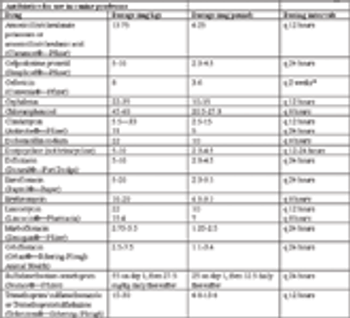
Superficial and deep pyodermas are undoubtedly among the most common problems a veterinary practitioner faces.
Dr. Kuhl is a veterinary dermatologist in private practice at Midwest Veterinary Dematology Clinic in Riverwoods, Ill. She is a 1987 graduate of the University of Illinois College of Veterinary Medicine. She was board-certified in veterinary dermatology in 1992.

Superficial and deep pyodermas are undoubtedly among the most common problems a veterinary practitioner faces.

Any time you are faced with an atopic patient who has sudden intensification of pruritus, these mites should be an important part of your diagnosis.

When talking about topicals, it is necessary to first understand the basic functions of the skin and how the skin performs these.

Canine demodicosis has also been called follicular mange or red mange.

Being confronted with a pruritic dog or cat is an extremely common occurrence in general veterinary practice. So, we need to be prepared.

Dermatophytosis is another of our common diagnoses, especially in general practice.

Recurrent pyodermas are a frustrating skin problem in veterinary patients. The key to treating them is to identify the underlying cause. But first you must discern whether the pyoderma is truly recurrent or is simply relapsing.

Published: August 1st 2009 | Updated:

Published: August 1st 2009 | Updated:

Published: August 1st 2009 | Updated:

Published: August 1st 2009 | Updated:

Published: August 1st 2009 | Updated:

Published: August 1st 2009 | Updated: